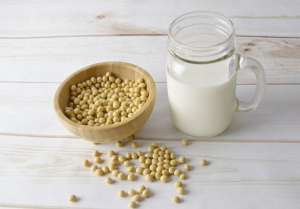If you enjoy tofu or choose soy milk over dairy, you may be curious about the potential health impacts of soy. Regarding the function that soy plays in women’s bodies, particularly concerning menopause and breast cancer, there do not appear to be as many answers as there are questions. There are a lot of misconceptions as well.
Your food contains soy processed from soybeans. One of the most popular forms is tofu. It may increasingly be present in vegetarian-friendly meals like soy burgers, meat alternatives, and dairy alternatives like soy cheese and soy milk. Phytoestrogens, isoflavones, or plant-based estrogens are present in soy. Specifically, genistein and daidzein are two isoflavones that mimic the effects of estrogen, the female sex hormone, in the body.
So, go through the content to learn about soy-producing estrogen since it plays a significant role in sexual reproduction and breast cancer.
Soybeans and Phytoestrogens
One of the few dietary sources of isoflavones, a particular class of plant estrogen, soybeans, is high in plant estrogens. Because of their structural similarity, these substances resemble estradiol, the primary estrogen generated by a woman’s ovaries. On the other hand, Isoflavones are weak estrogens with a weak potency compared to estradiol. Because women (and men) who consume soyfoods have high blood levels of isoflavones, they are likely to have physiological consequences despite their decreased potency. One cup of tofu or two cups of soymilk can result in blood levels of isoflavones that are 500–1,000 times greater than a woman’s average estrogen levels.
Other characteristics of soybean isoflavones exist in addition to their estrogenic properties. For instance, they prevent the functioning of enzymes that regulate and govern cell development. Additionally, one of the soybean’s isoflavones is thought to avoid the development of blood vessels that support the growth of tumors. Isoflavones also function as antioxidants, and Isoflavones may help lower the risk of certain malignancies due to these and other factors.
The weak estrogenic potential of isoflavones initially drew attention, especially concerning breast cancer. Some studies hypothesized that isoflavones, weak estrogens, operate as anti-estrogens, inhibiting the effects of estrogen. It has been postulated that isoflavones may reduce risk and that soy food intake contributes to lower breast cancer mortality rates in Asian nations where soy food consumption is prevalent since estrogen elevates the risk for breast cancer. Despite conflicting data, there is some highly positive research that suggests soy isoflavones may lower the risk of prostate cancer.
You can even check out the latest U.S. Soy articles on the usage and benefits of soyabean oil.

Soy Has No Link to Cancer
Laboratory animals are primarily preferred in most research examining the relationship between a soy diet and an elevated risk of breast and other cancers. According to the American Cancer Society (ACS), these results might not apply to humans because humans and rats process soy differently.
Furthermore, research into soy’s impact on humans hasn’t revealed any dangers. The ACS claims that further study is essential since understanding the connection between soy and cancer is still developing, and soy does not currently appear to be a cancer risk.
Research indicates eating soy lowers the chance of developing cancer. According to a preliminary Japanese study, men who regularly consume soy products may experience hormonal changes that reduce their risk of developing prostate cancer. According to a 2013 study, probiotics and soy consumption can lower breast cancer incidence in rats.
Therefore, you might conclude that there isn’t enough proof to say if soy raises or lowers the chance of developing cancer.
Soy Foods Are Good Sources of Isoflavones
You should only consume whole soy foods, not soy-based items. Soy milk, tofu, tempeh, and edamame are whole soy foods. That is a fantastic place to get isoflavones. However, isoflavone levels in soy-based condiments like soy sauce and soybean oil are insufficient to reap the advantages of soy, and they may even be harmful due to their high salt and trans-fat content.
Supplements containing soy protein isolate are at the opposite extreme of the range. A purified form of soy that retains protein is known as soy protein isolate and is frequently present in protein bars and nutritional supplements. Consumable levels of isoflavones may exceed in products containing soy protein isolate; hence, you must only consume it in the recommended quantity.

How Much Soy Should You Be eating?
First, it’s crucial to recognize that not everyone likes soy, and that’s okay. One or two servings per day are suitable for people who do, and one serving of soybeans equals one cup of soy milk, one cup of edamame, or one-fourth cup of tofu. The key to everything is balance.
Additionally, several cancer treatments may interact with soy, so it’s crucial to discuss how to include it in your diet with your care team, especially if you are receiving active treatment.
Final Note
There are endless ways to increase your soy intake because soy is an extraordinarily adaptable meal. According to research, including two servings of soy foods in your daily diet may help lower your chance of developing osteoporosis and heart disease and may lessen some of menopause’s adverse effects. Soy’s possible health advantages and hazards are still being studied. What you now know about this plant-based meal will change as time goes on, and it appears that soy’s benefits now exceed its drawbacks.

